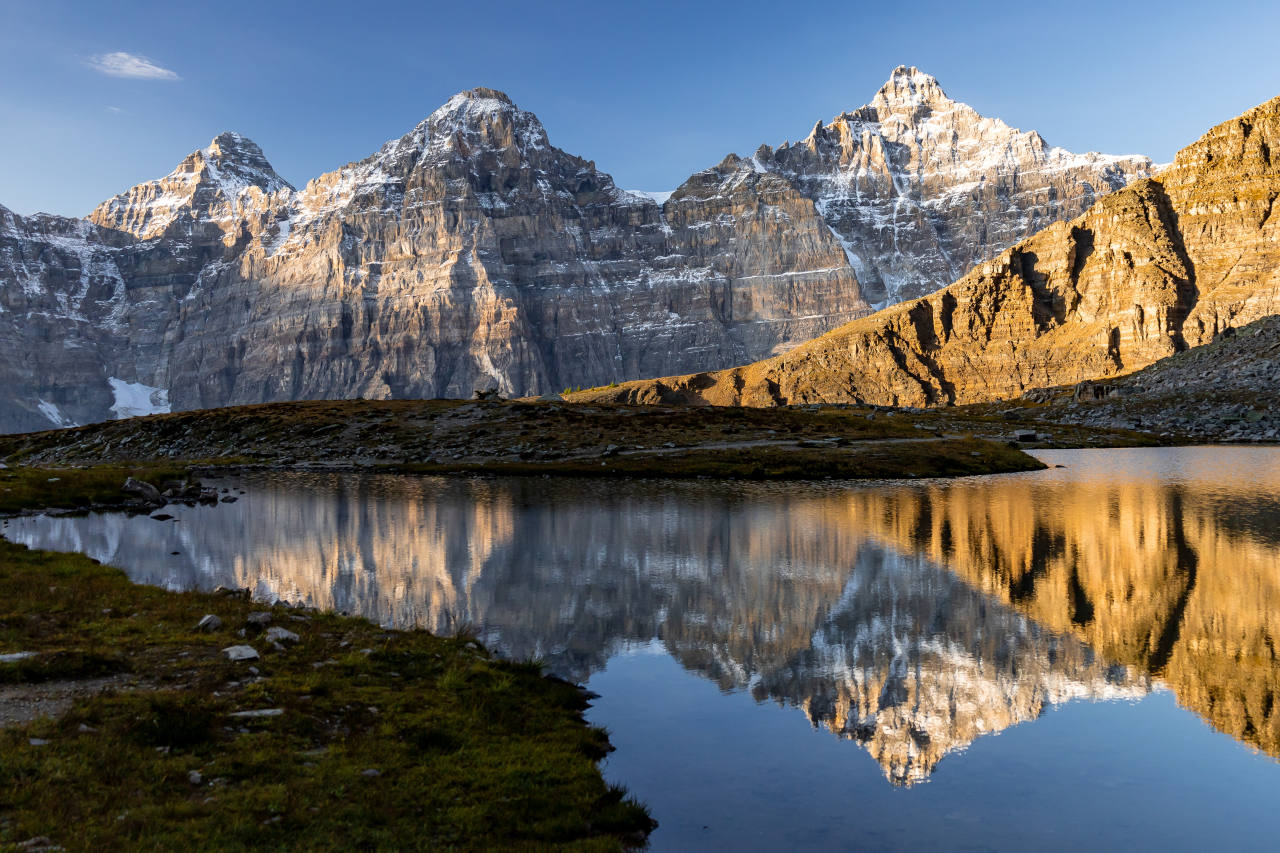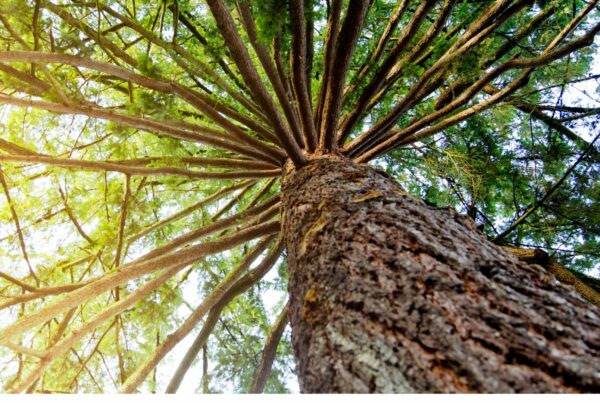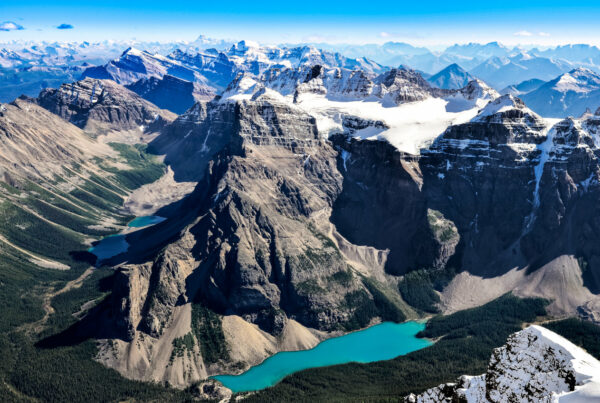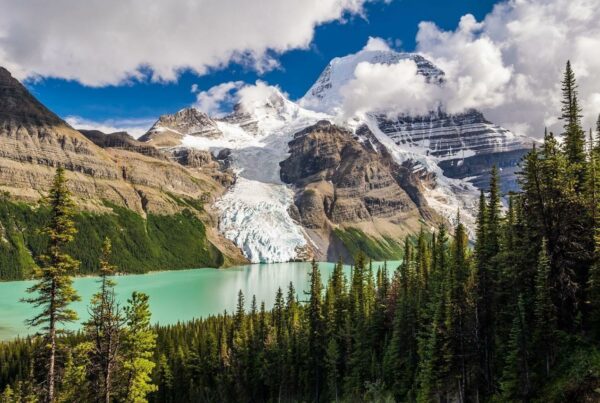Want to get away from the crowds of mass tourism and have a more mindful hiking experience at Moraine Lake? Here’s how to do it.
Situated in the Valley of the Ten Peaks at an elevation of approximately 6,183 feet about 20 minutes from Lake Louise, Moraine Lake is the jewel of the Canadian Rockies but the lake is just the beginning of the natural wonders in this area.
The spectacular blue-green colour of the lake is due to glacial rock flour and the colour changes with the movement of sunlight and the patterns of melt from the glaciers. It’s best to experience Moraine Lake in the morning when the water is more likely to be calmly reflecting the 10 peaks in the surrounding valley.
On the hiking trails surrounding Moraine Lake, you will find many more awe-inspiring places and I’m sure you will experience a lot more peace and tranquillity away from the crowds.
1. The Rockpile
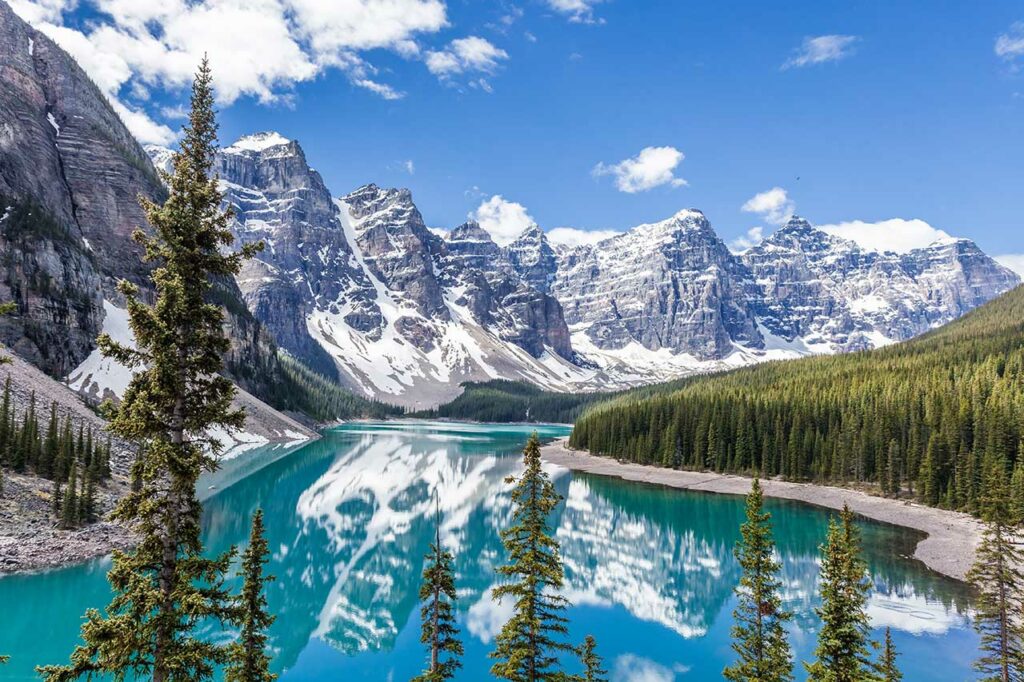
Time: 30-60 Minutes
Distance: 1 km (Out & Back)
Elevation Gain: 30 m
Difficulty: Easy
Trail Map: Alltrails
The classic Moraine Lake up the Rockpile overlooking the lake is a must-do but it gets very busy. It’s best to get there in the morning before 10 am when the reflections on the lake are usually the best.
There are 3 viewpoints above the lake offering panoramic views. It takes less than an hour to hike the Rockpile, which lots of time to do more advanced hikes in the Valley of the Ten Peaks surrounding Moraine Lake.
2. Moraine Lake Shoreline
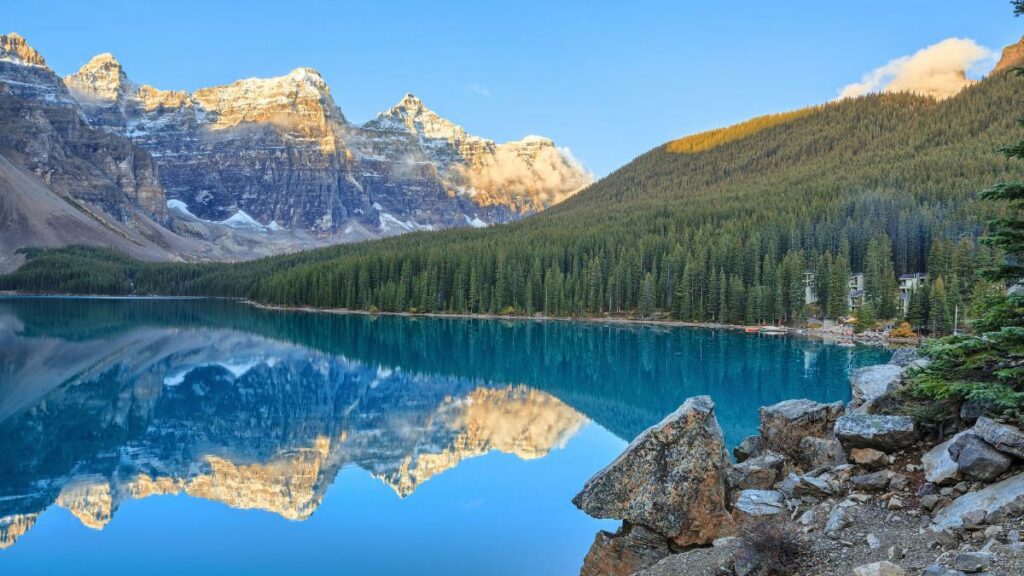
Time: 30-60 Minutes
Distance: 1.3 km (Out & Back)
Elevation Gain: 10 m
Difficulty: Easy
Trail Map: Alltrails
It takes about 20-30 minutes to walk to the back of the lake where you can see waterfalls pouring off the glaciers along the continental divide, which you can’t see from the Rock Pile. The crowds thin out fast as you walk past the canoe rentals by the Moraine Lake Lodge.
There are many places along the way to stop and admire the reflections on the lake or take a quick cold plunge in the icy waters but refreshing waters of Moraine Lake. The creek that flows off the glaciers behind the lake is gushing torrent in the summer, which is a remarkable sight to see.
3. Larch Valley And Sentinel Pass
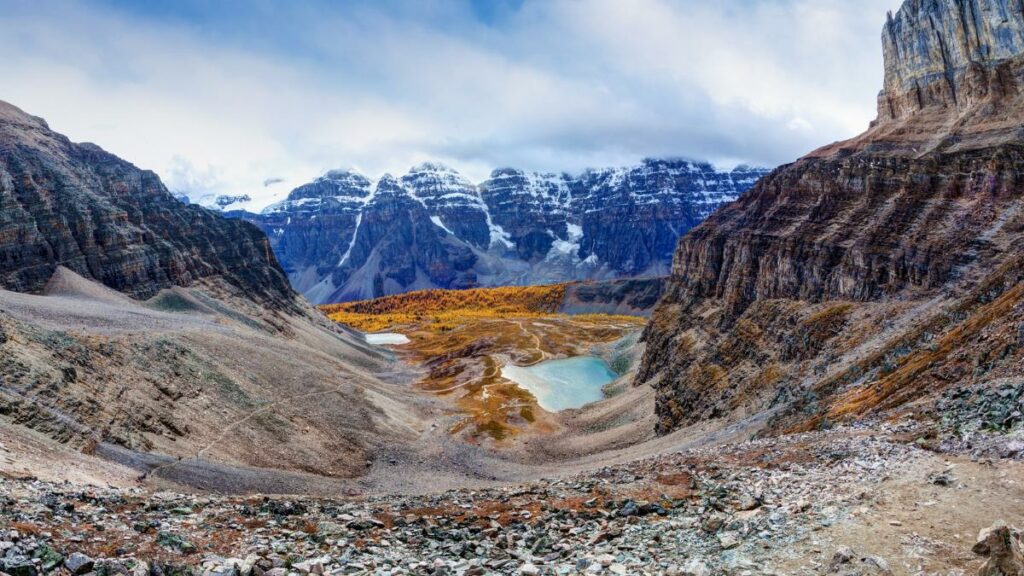
Time: 4 – 6 Hours
Distance: 11 km (Out & Back)
Elevation Gain: 748 m
Difficulty: Intermediate
Trail Map: Alltrails
Just past the Moraine Lake canoe rentals you will enter the forest and see the trailhead for Larch Valley. In late September and early October, this becomes a popular hike to see the entire valley of Larch trees change to a golden shade of yellow before they drop their needles.
In the Larch Valley, there is a series of small picturesque lakes called the Minnestimma Lakes. If you’re looking for a challenge, make the extra climb from the upper lake up to Sentinel Pass for one of the best viewpoints in Banff National Park overlooking the Valley of the Ten Peaks and the Paradise Valley.
4. Effiel Lake
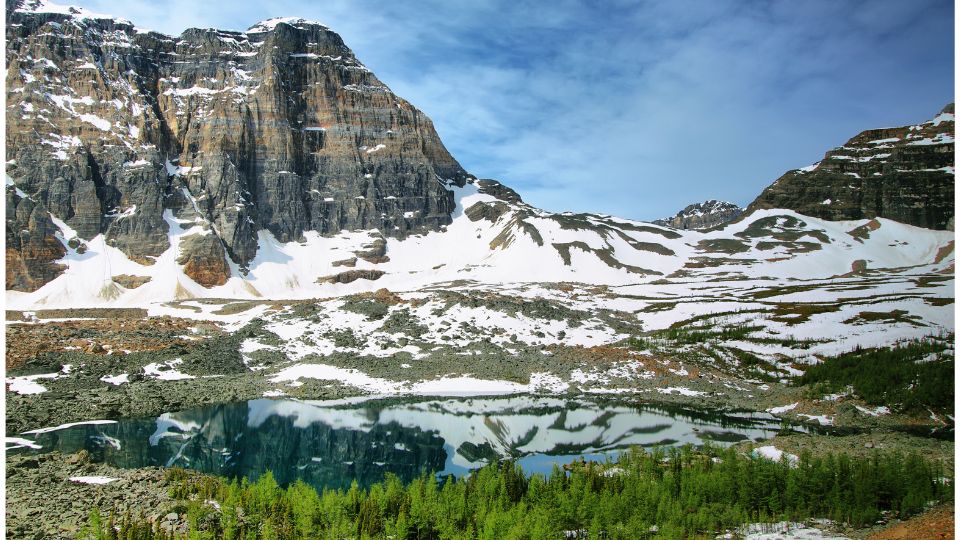
Time: 4 – 6 Hours
Distance: 12 km (Out & Back)
Elevation Gain: 610 m
Difficulty: Intermediate
Trail Map: Alltrails
If you take the Larch Valley trail, you will follow about 45-minutes of switchbacks before you arrive at a large bench where the trail branches. Take the trail to the left and in about 10 minutes you will get one of the best views of Moraine Lake from the backside of the Valley of the Ten Peaks.
The beauty of the Effiel Lake trail is it gets much less hikers than the trails that go higher into Larch Valley. From Effiel Lake, you can continue up to Wenkchemna Pass or make the trip to the upper part of Paradise Valley where you will find the Giant Steps, a spectacular series of cascading waterfalls.
5. Paradise Valley And Giant Steps
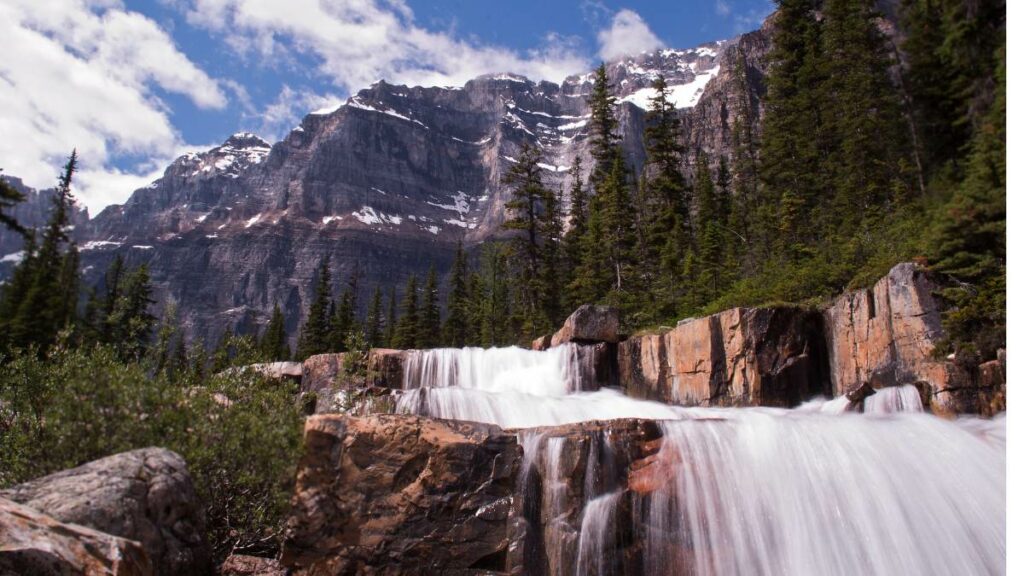
Time: 8 Hours
Distance: 20 km
Elevation Gain: 1127 m
Difficulty: Expert
Trail Map: Alltrails
Between Moraine Lake and Lake Louise, you have majestic Paradise Valley where you can get away from the crowds even on the busiest days of the summer. In this valley, you have towering mountains on both sides and a series of beautiful lakes and waterfalls.
This is a great day hike if you get the shuttle to Moraine Lake and then walk back down Paradise Valley to Moraine Lake Road and return to the Lake Louise Village. I highly recommend doing this hike starting at Moraine Lake if you want an extraordinary backcountry experience in Banff National Park.
6. Consolation Lakes Trail
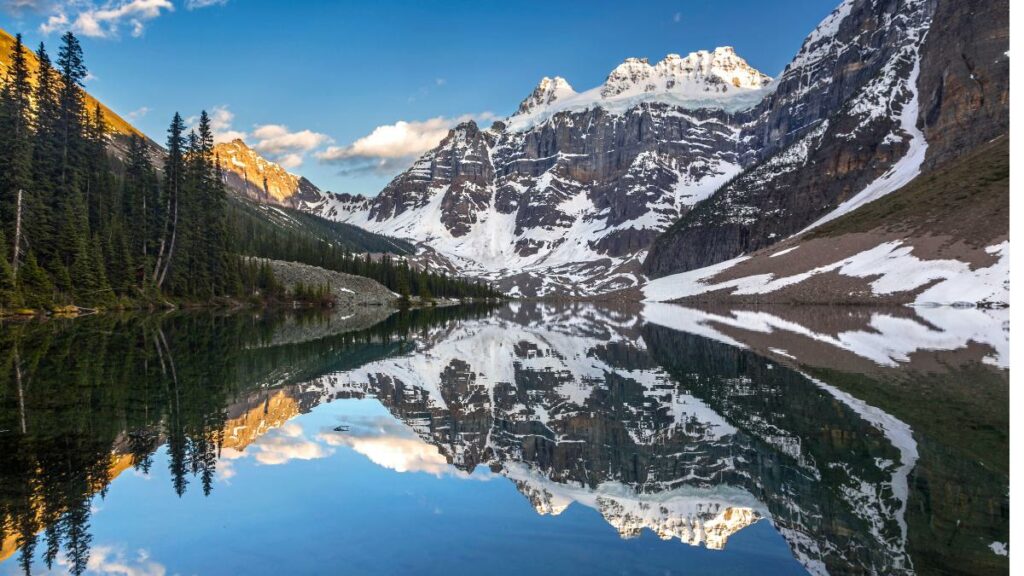
Time: 3-4 Hours
Distance: 6.5 km
Elevation Gain: 269 m
Difficulty: Intermediate
Trail Map: Alltrails
Halfway up the Rock Pile hike, you will see a trail branching to the left with a large picture of a Grizzly Bear. This is the beginning of the Consolation Lakes and it’s recommended that you hike in groups of at least 4 in this upper valley, which is an important habitat for Grizzlies.
Apart from the first section along the rocks, the Consolation Lakes hike goes through a beautiful forest trail up to the edge of Consolation Lake where Mount Babel and a hanging glacier tower over your head. If you’re adventurous and an experienced scrambler, you can continue up to a second even more beautiful lake.
7. Mount Temple
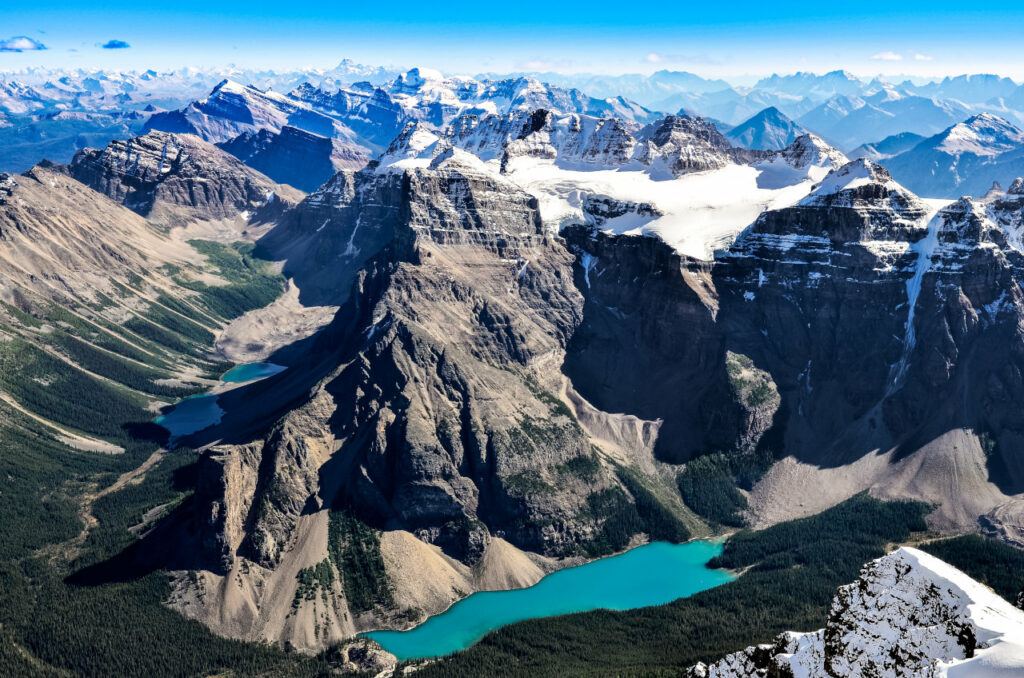
Time: 8-10 Hours
Distance: 15 km
Elevation Gain: 1632 m
Difficulty: Expert
Trail Map: Alltrails
Mount Temple is the 3rd highest mountain in Banff National Park and it’s one of the most difficult hikes in the park. It should only be attempted by people with excellent fitness and a lot of alpine hiking experience.
If you’re looking for a monster challenge then Mount Temple is your mountain. This glacial-capped mountain towers over Moraine Lake and Lake Louise and offers one of the best panoramic views in the Canadian Rockies.
What is the best time to hike Moraine Lake?
Moraine Lake is open from June 1st to October 14th each year.
The best time to visit Moraine Lake for hiking is in July or August. It’s also nice in the other months but in June it is cooler and the water levels tend to be lower because the glaciers aren’t melting as fast while the water levels also drop again in October when it cools off.
Late September to mid-October is a popular hiking time to see the Larch Trees turn yellow.
How do I get to Moraine Lake to hike?
The 11 km road to Moraine Lake has been closed to private vehicles since June 2023. To get to Moraine Lake, you can book a Parks Canada Shuttle, a shuttle bus to Moraine Lake or a Lake Louise and Moraine Lake Tour.
Why is it called Moraine Lake?
Moraine Lake comes from the pile of rocks known as moraines, created by the receding glaciers that formed the lake.
The indigenous name for Moraine Lake comes from the Stoney Nakokda word Wenkchemna, which roughly translates as “the lake of the ten peaks.”
Each of the peaks surrounding Moraine Lake was originally named after the numbers from the Stoney Nakoda language (east to west): Heejee, Nom, Yamnee, Tonsa, Sapta, Shappee, Sagowa, Saknowa, Neptuak, and Wenkchemna.
- 10 Sustainable Travel Trends Driving The Future of Tourism - March 9, 2025
- 10 Tips To Sell Out Your Transformational Retreats In 2025 - February 20, 2025
- Build 10 Habits That Free Up Your Time With Mindful Coaching - February 11, 2025


